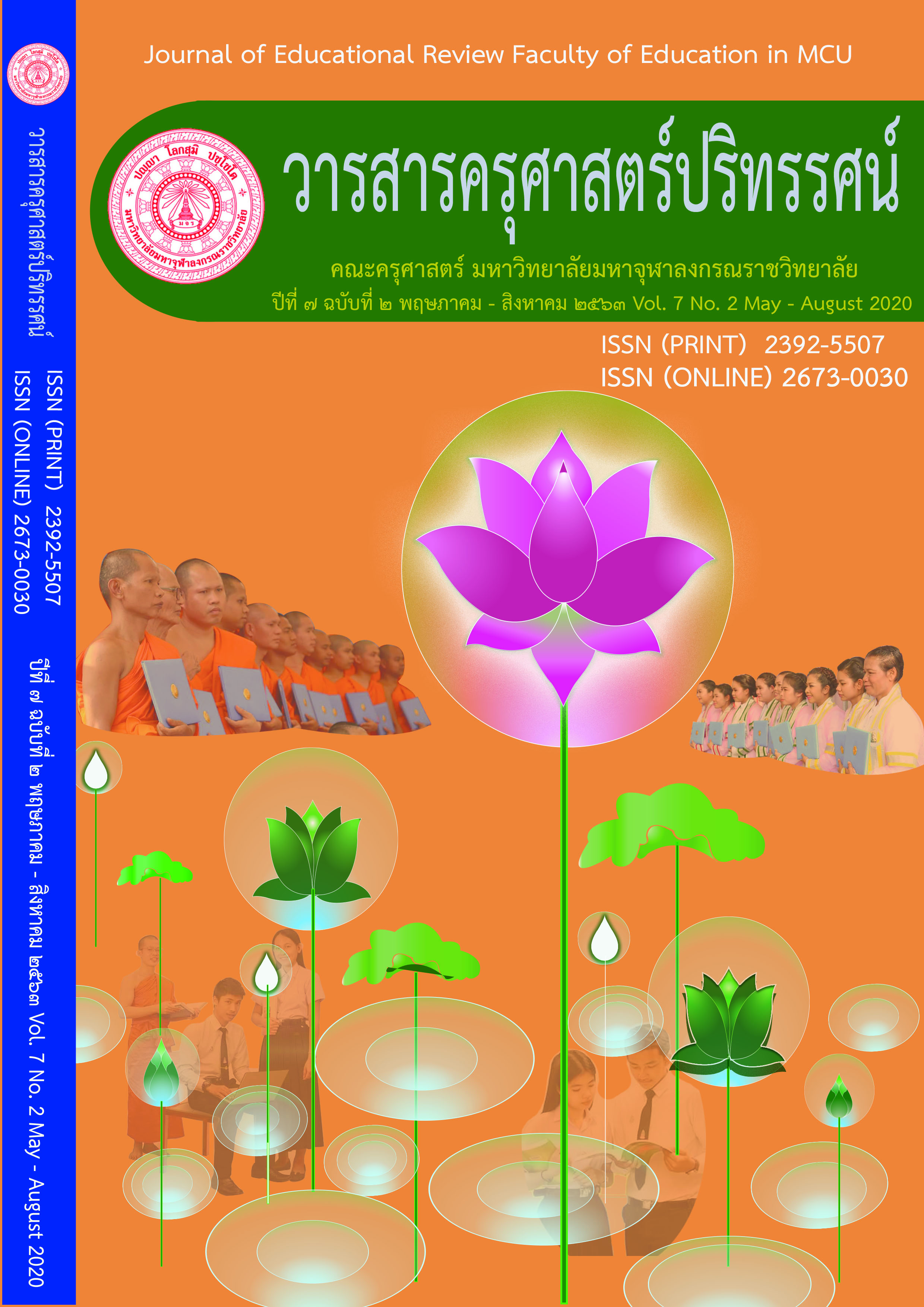INTERNAL BRANDING OF PRIVATE SCHOOL: A CASE STUDY OF A PRIVATE SCHOOL WITH BRANCHES
Main Article Content
Abstract
This research article aims 1) to study the perception of the private school administrators about the internal branding of their own schools and 2) to study the strategies for internal branding of a private school with branches using qualitative research methodology. Research approaches were an in-depth interviews with executives, including the director and deputy director, and focus group discussions with teachers and school personnel. The results are described in 2 parts. Part 1: The perception of the private school administrators regarding the internal branding of their own schools. It was found that school administrators recognized the internal branding of their own schools in 4 areas, namely, academic, personnel, learners, and premises. Part 2: Methods for internal branding. Results revealed that there were 2 ways to create a brand, which are 1) to create understanding and awareness for teachers and personnel about school identity and focus, 3 strategies were used: building awareness and understanding by means of notification, expression of executive leadership, and internal communication and 2) to create love and engagement among teachers and school personnel, 4 strategies were used: rewarding and praise, freedom atmosphere in the work place, working welfare and working environment.
Article Details
ทัศนะและความคิดเห็นที่ปรากฏในบทความในวารสารฉบับนี้ถือเป็นความรับผิดชอบของผู้เขียนบทความนั้นเพียงผู้เดียว และไม่ถือเป็นทัศนะและความรับผิดชอบของกองบรรณาธิการ
กองบรรณาธิการขอสงวนสิทธิ์ในการคัดเลือกบทความลงตีพิมพ์และจะแจ้งให้เจ้าของบทความทราบหลังจากผู้ประเมินบทความตรวจอ่านบทความแล้ว
ต้นฉบับที่ได้รับการตีพิมพ์ในวารสารครุศาสตร์ปริทรรศน์ คณะครุศาสตร์ มหาวิทยาลัยมหาจุฬาลงกรณราชวิทยาลัย ถือเป็นกรรมสิทธิ์ของคณะครุศาสตร์ มหาวิทยาลัยมหาจุฬาลงกรณราชวิทยาลัย ห้ามนำข้อความทั้งหมดหรือบางส่วนไปพิมพ์ซ้ำ เว้นเสียแต่ว่าจะได้รับอนุญาตจากมหาวิทยาลัยฯ เป็นลายลักษณ์อักษร
References
สมชาติ ธรรมโภคิน. และ ศศิรดา แพงไทย. 2562. “กลยุทธ์การสร้างแบรนด์โรงเรียนเอกชนสู่โรงเรียนยอดนิยม” วารสารมหาจุฬานาครทรรศน์ 6(8): 4119 – 4132
มติชนออนไลน์. 2562. วิกฤต!! ปี’62 ร.ร.เอกชนปิดตัวเพิ่ม 4 เท่า. (Online).https://www.matichon.co.th/education/news_159054,วันที่ 22 กรกฎาคม 2562.
Adenti Prasit 2019. “Internal Branding in Customer Service Officers PT Bank Central Asia.” American Journal of Humanities and Social Sciences Research. 3 (3): 37–49
Asha, C.S. and Jyothi, P., .2013 “Inter Branding: A Determining Element of Organizational
Citizenship Behaviour.” Journal of Contemporary Management Research. 7(1): 37-57
Breen, L.R. 2006. A Practical Guide to Focus Group Research. Journal of Geography in Higher Education. 30(3). 463 – 475.
Burmann, C., & Zeplin, S. (2005). Building brand commitment: A behavioural approach to
internal brand management. The Journal of Brand Management, 12(4), 279-300.
Dahari, Z., and Ya, M. S. 2011. “Factors that influence parents’ choice of preschools education in Malaysia: An exploratory study”. International Journal of Business and Social Science,
(15): 115-128.
Dinko Jukic. 2017. “The Importance of Corporate Branding in School Management.” STRATEGIC MANAGEMENT. (22)4: 011 - 018
Guba, E. G., & Lincoln, Y. S. (1989). Fourth generation evaluation. Newbury Park, CA:
Sage Publications.
Khan, B. M. (2009). Internal branding: aligning human capital strategy with brand strategy. ICFAI
Journal of Brand Management, 6(2), 22-36.
Matanda, M. J., & Ndubisi, N. O. (2013). Internal marketing, internal branding, and organisational outcomes: The moderating role of perceived goal congruence. Journal of Marketing Management, 29(9-10), 1030–1055.
Peter. E.D. 2002. Trianglation in construction management research. Engineering, Construction and Architectural Management, 14(4), 365 -373
Punjaisri, K., & Wilson, A. (2007). The role of internal branding in the delivery of employee
brand promise. Journal of Brand Management, 15(1), 57-70.
Raymond L. Gold. 1958. “Roles in Sociological Field Observations.” OXFORD JOURNALS 36(3): 217-223
Richard P. (2013). Student Debt Load Found to Vary by College and State. fromhttps://www.nytimes.com/2013/12/05/education/student-debt-load-varies-greatly-by-college-and-region.html. Retrieved December 4, 2013
Stephanie Ewert. 2013. The Decline in Private School Enrollment. SEHSD Working Paper Number FY12-117. U.S. Census Bureau Social, Economic, and Housing Statistics Division 1-24
Shaari, H., Salleh, S. M., and Hussin, Z. 2012. “Relationship between Brand Knowledge and Brand Rewards and Employees” Brand Citizenship Behavior” The Mediating Roles of Brand Commitment. International Journal of Business and Society. 13 (3): 335–354


